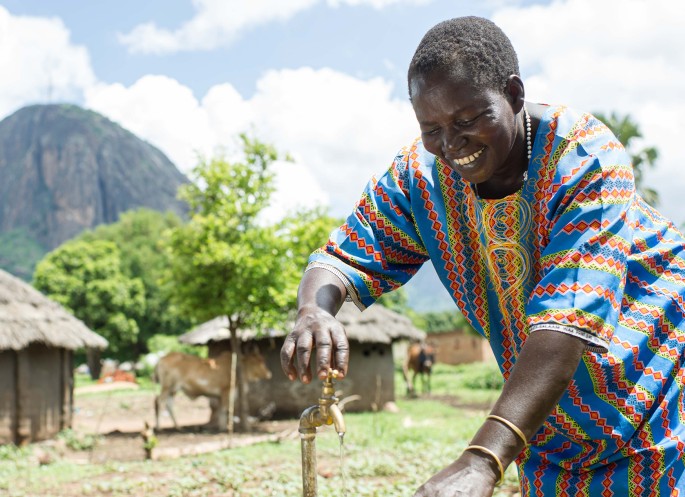Water Justice Fund: strengthening climate resilience through women-led water projects
Change is visible in Kajiado County in Kenia. Not just in the land, ever more affected by climate change, but also in the lives of women who battle the harshness of drought and scarcity.
The lack of water affects women and girls the hardest. To address this, Simavi, together with its local partner Neighbours Initiatives Alliance (NIA), supports women’s groups through the Water Justice Fund.
Lydia Lepapa, the chairperson of the Naishorua Self-Help Group, explains: ‘We used to walk all the way to Motargwes borehole to fetch water. It is about five to eight kilometres from here. This took so much of our time, and on some days, we would return home empty-handed because livestock were given priority to access the water over women,’ she adds.
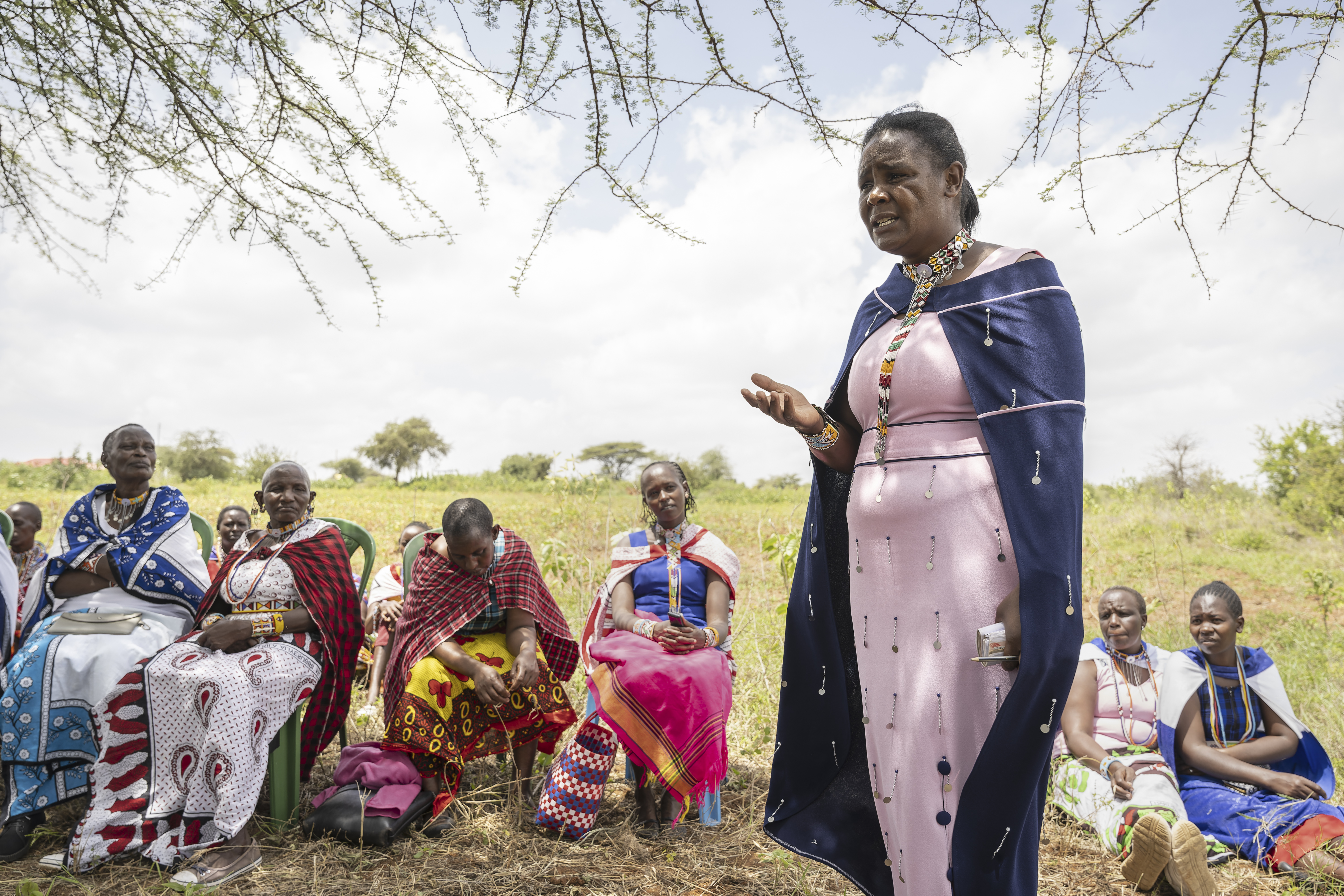
Cow urine for laundry
Sarah Kotene tells: ‘I used cow's urine to wash my clothes during my monthly periods because we did not have access to enough water. Cow's urine cleans and removes dirt; imagine waiting for a cow to urinate so you can wash.’
‘While fetching water, collecting firewood, and doing other chores, we realised we often met along the way. That is when we felt the need to come together as women,’ Lydia recalls. ‘We decided to start saving so that we could buy small things for ourselves and stop relying entirely on our husbands.’
Additionally, the women began taking up odd jobs, such as tilling land and clearing fields to earn money. This allowed them to start small businesses, pay school fees for their children, and meet other basic needs.

An effective approach
Yet the need for water remained pressing. ‘We still needed water close to our community,’ Lydia says. One day, the women came across a call for proposals. Because their area is quite remote, NIA used posters to reach out to women.
It proved to be the most effective approach, since community meetings were largely dominated by men and rarely attended by women. The call was for the Water Justice Fund programme which brings women together to share ideas and find solutions around water access and management.
In Kenya, the initiative is implemented in two counties, Kajiado and Makueni. In Kajiado alone, the fund has supported 24 women's groups and three schools. Among these successful groups is the Naishorua Self-Help Group.
Lydia recalls how they were immediately drawn to the opportunity, though at first, they feared the process might be complicated. To their relief, it turned out to be smooth. ‘The briefing from Neighbours Initiative Alliance was very helpful,’ she says.

'Having our proposal approved was a dream come true for us.'
Teamwork to achieve their goals
With Sarah's help, they drafted their concept note, presented it before a panel, and were later informed that their proposal had been approved. ‘That was a dream come true. Every coin mattered to us,’ Lydia smiles.
The Water Justice Fund disburses grants in three stages: sixty percent in the first round, thirty percent in the second, and the remaining ten percent in the final round. The women took the lead in managing every aspect of the project: from managing the budget money to negotiating for quality of materials to ensure efficiency in budget utilization.
Even during the digging of the long trench for the water pipeline, they volunteered their labour. After days of hard work, resilience, and countless negotiations, they finally achieved their goal: water had reached their community.
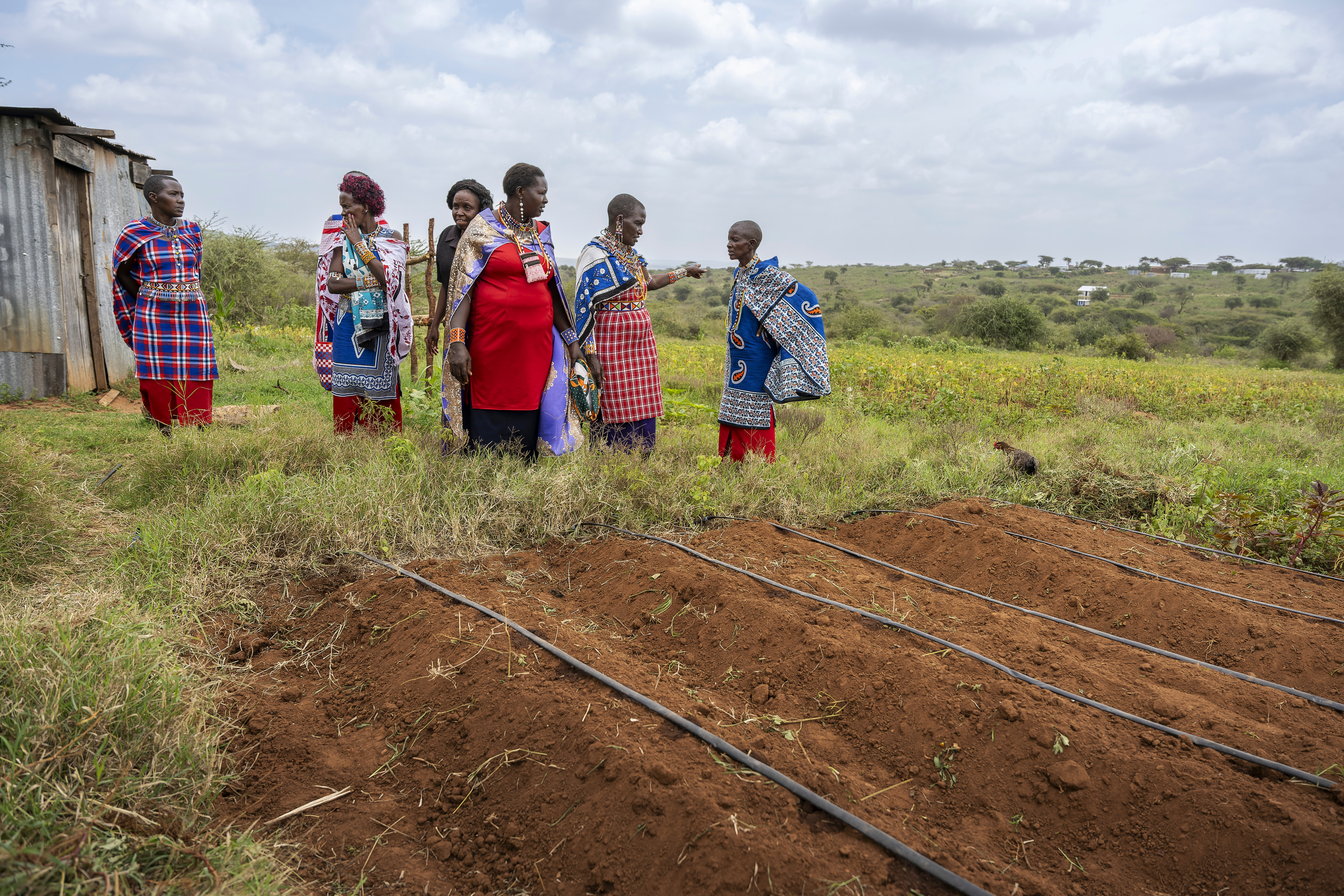
Continueing to empower
Recognising their dedication, Neighbours Initiatives Alliance continued to empower the group with training and information to strengthen project management, a support extended to other women's groups in the region as well.
Through their savings and the income earned from selling water, the group was able to purchase land and venture into farming. But their ambitions did not stop there. They approached NIA once again, this time seeking support to establish a tokenised (automated) water kiosk.
The idea was revolutionary. Few would have imagined that rural women could embrace such an innovative solution. This milestone became a catalyst for further transformation.
The women expanded into agriculture, using irrigation to make the most of the water they had long fought for. With ongoing training and mentorship, they began practising modern, climate-smart farming methods.
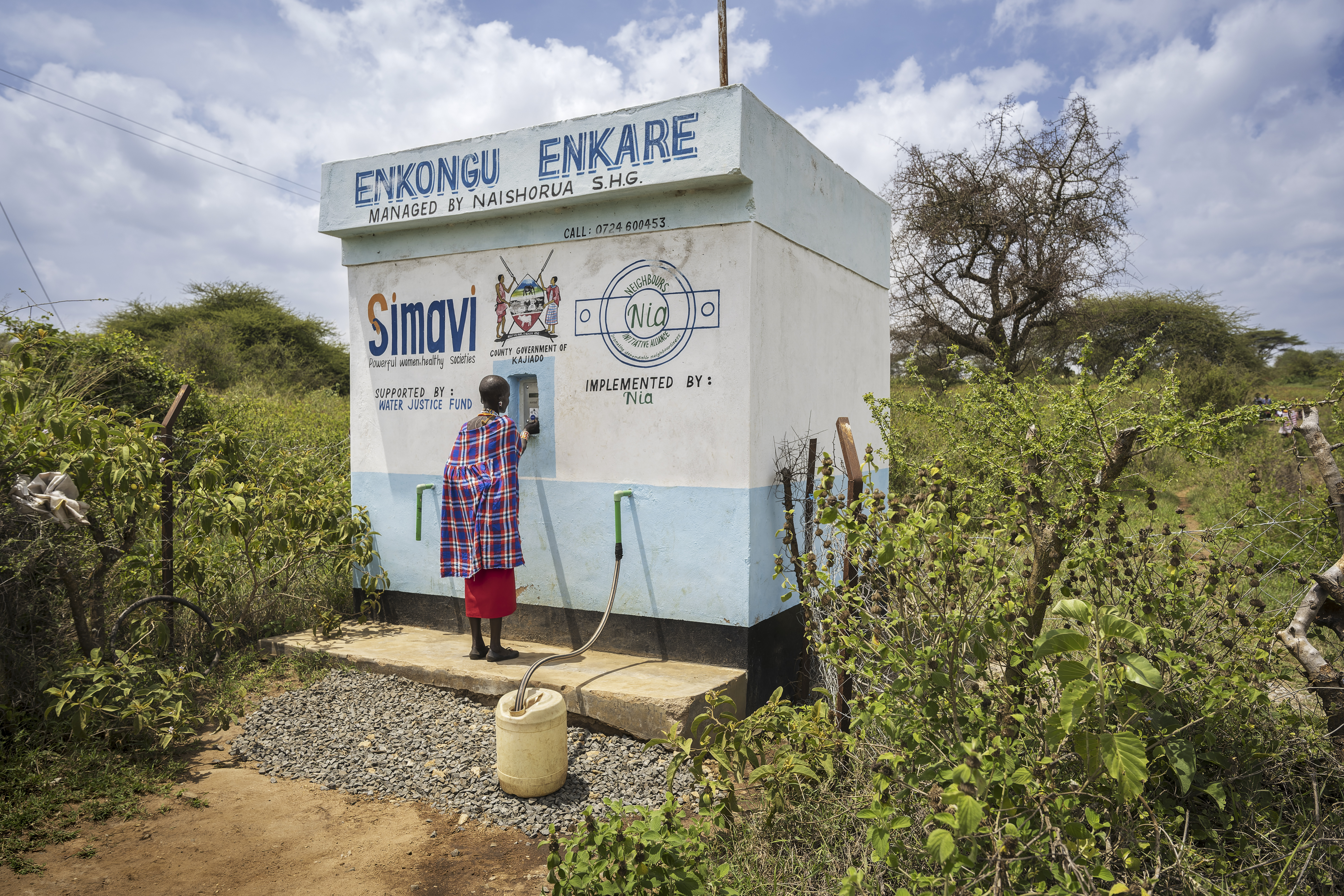
Water around the clock
Today, residents can fetch water around the clock, and the impact goes beyond convenience. Men in the community have begun supporting their wives in fetching water. A notable shift from traditional norms.
Signs of socio-economic empowerment are now evident. Women have the means to braid and plait their hair, something that once seemed out of reach. In the past, they could not afford grooming costs and often resorted to shaving their heads.
With access to water and financial empowerment, they now have diverse clothing options and can keep them clean through regular washing. This is a far cry from the days when some had to rely on cow urine to wash clothes stained with menstrual blood.
The water kiosks have bridged a long-standing gap for women who once spent hours trekking long distances to fetch water. With more time on their hands, many have explored new opportunities and started small businesses.
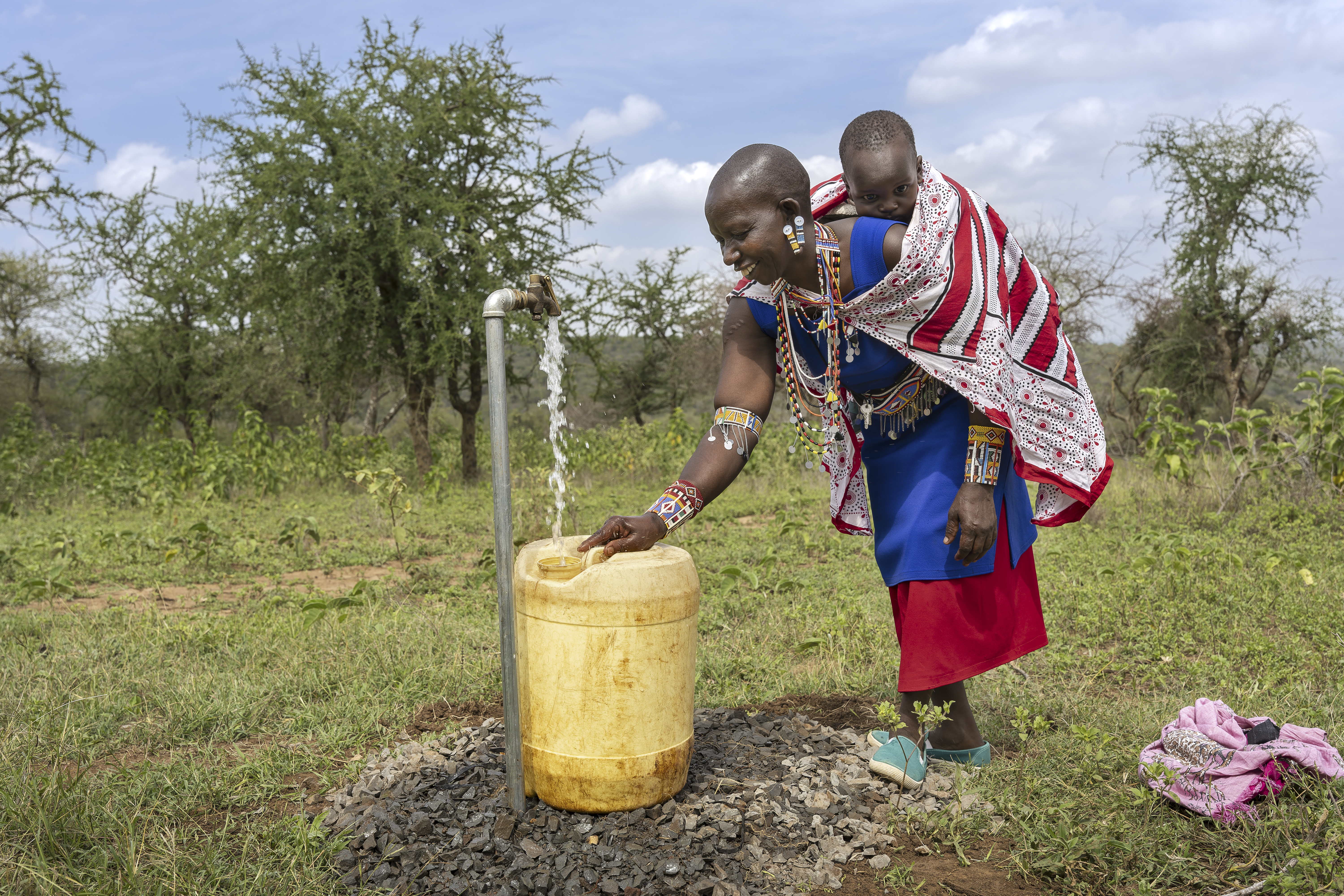
Additional income due to water
Most are now engaged in income-generating activities that have improved their livelihoods. The transformation is visible. Many have bought water tanks for their homes, irrigated their farms, and increased their agricultural yields.
With the additional income, some have even purchased land and attained greater financial stability. Once casual laborers on other people's farms, they are now the ones employing extra hands to work on theirs.
Members pay a user fee for the water and purchase tokens that enable them to draw it. While they continue contributing to their respective groups, the water kiosk provides an additional source of income through its management.
The fees collected help cover operational and maintenance costs and ensure the water systems and kiosk’s sustainability. At the same time, the initiative sustains the groups themselves by adding to their revenue, which at the end of each year is shared among members as profits or dividends, with a portion set aside for reinvestment.
When scaled up, such projects have the potential to address not only local challenges but also broader global issues, like climate adaptation and climate resilience.
This article was written in collaboration with Vice Versa.


